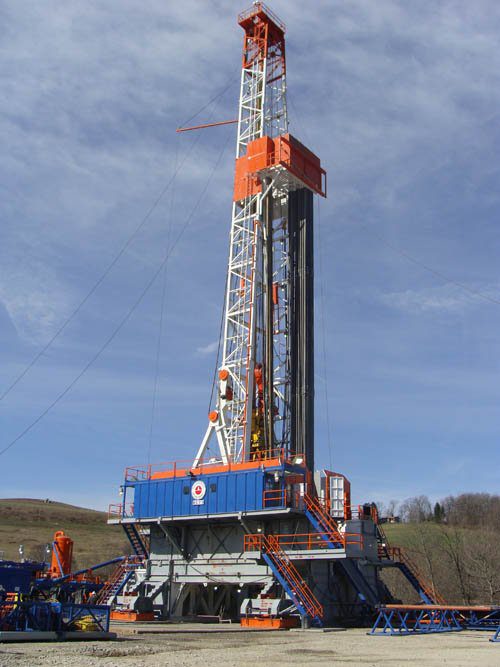Drilling
 Unconventional shale wells are drilled using 21st century vertical or horizontal technologies. Vertical wells are sometimes first drilled in an area to obtain information valuable for planning the drilling of more costly and technically demanding horizontal wells. Unconventional shale wells in Pennsylvania are drilled horizontally because it offers access to a larger quantity of natural gas, while disturbing a significantly smaller area on the surface. Both vertical and horizontal unconventional shale wells produce marketable quantities of natural gas.
Unconventional shale wells are drilled using 21st century vertical or horizontal technologies. Vertical wells are sometimes first drilled in an area to obtain information valuable for planning the drilling of more costly and technically demanding horizontal wells. Unconventional shale wells in Pennsylvania are drilled horizontally because it offers access to a larger quantity of natural gas, while disturbing a significantly smaller area on the surface. Both vertical and horizontal unconventional shale wells produce marketable quantities of natural gas.
Prior to drilling an unconventional shale well, operators must obtain several permits and adhere to a number of local, state and federal laws and regulations from constructing the well pad, building the access drive and constructing and operating the well itself.
The drilling process focuses first on reaching – and protecting – water-bearing zones beneath the ground. Drilling is completed using a small amount of lubricating agents. The entire length of the well, from the surface to the groundwater strata, is cased and cemented tightly with a series of steel pipes and concrete to form a barrier between the wellbore and the earth. As drilling continues to push deeper into the earth, a series of long drilling pipes follow it to establish the well.
After drilling vertically to the depth that reaches slightly above the targeted unconventional shale formation, the drill bit can then turn to push its way horizontally into the unconventional shale formation, sometimes as much as 10,000 to 15,000 feet into the formation. This allows for the extraction of larger quantities of natural gas from a single wellhead. Unconventional shale wells generally take between 15 to 30 days to drill, depending on the timetable of the individual operator.




